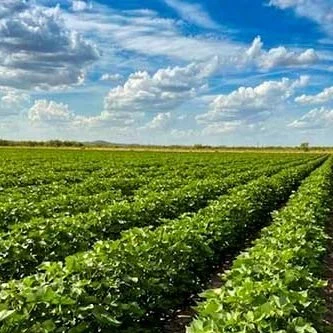Cotton acreage in Louisiana is expected to increase substantially this year. Now is a great time to review a few key recommendations to ensure the 2022 season gets off to a great start.
Read MoreThe 1996 Farm Bill requires The Cotton Board to conduct an independent, third-party evaluation every five years of the effectiveness of the Cotton Research & Promotion Program (the Program). The most recently concluded evaluation reflected well on the Program’s effectiveness both over the long-term (1986-2019) and over the last five years (2015-2019).
Read MoreThe cotton leafroll dwarf virus causes yellowing and distortion of leaves and is believed to be vectored by the cotton aphid (Aphis gossypii) during feeding.
Read MoreThe U.S. Department of Agriculture’s (USDA) Commodity Credit Corporation today announced the 2022 crop loan rate differentials for upland and extra-long staple cotton which are applied to the crop loan rate to determine the per bale actual loan rate.
Read MoreWhen USDA’s 2022 Prospective Plantings Report was released on March 31, it was no surprise that fertilizer-intensive corn acres were projected to be down across the country.
It also surprised few that the report projected soybean acres to be up — with farmers estimating they will plant a record-breaking 91 million acres of beans this spring.
Read MoreThe planting dates for soybean in Louisiana range from early March to late June, depending on production systems and maturity groups. This variability in planting dates can expose soybean plants to a myriad of insect pests that can injure both below and above ground plant parts.
Read MoreClick for Microsoft Excel spreadsheets that allow growers the opportunity to evaluate the changes that herbicide selection, unit price, application rates, and tillage have on total weed control program costs on a per-acre basis.
Read MorePlease join NCC staff at the Macon Ridge Research Station Scott Center in Winnsboro, LA on Thursday April 14, 2022 for US Cotton Trust Protocol Enrollment Assistance. If possible, please bring a laptop computer or Ipad. The purpose of the meeting is for staff to provide you with assistance in completing enrollment in the US Cotton Trust Protocol.
Read MoreThe Agricultural Policy and Market Situation Newsletter (Volume V, Issue 1) contains a summary of agricultural policy happenings from the recent quarter (January 1st through March 31st).
Read MoreThe April Crop Market Update for Corn, Soybeans, Rice, and Cotton contains a discussion on USDA-reported supply and demand dynamics and farm price implications for the 2021/22 marketing year. The outside markets continue to monitor the Russia/Ukraine war as well as the slowing economy in China (due to the country’s COVID lockdown policy reducing import demand).
Read MoreIn an April 1 letter sent to members of Congress across the Southeast, Joe Martin, president of Southern Cotton Growers, stressed relief for farmers is warranted this year due to skyrocketing production costs.
In the letter, Martin provided data from a study commissioned by Southern Cotton Growers and prepared by Don Shurley, professor emeritus of cotton economics at the University of Georgia, that documents the escalating production costs.
Read MoreIn it’s latest prospective plantings report, USDA reports corn acreage in Louisiana this season will be down slightly while cotton acreage will be WAY up.
Read MoreThe U.S. Cotton Trust Protocol announced today that due to demand, the deadline for growers to enroll and complete their data entry for the 2021/22 cotton crop is extended until April 30.
Read MoreScientists with the LSU AgCenter annually evaluate cotton varieties in official variety trials (OVTs) at several locations across the state. Cotton varieties are managed using practices that follow LSU AgCenter recommendations and demonstrate commercial operations as closely as possible.
Read MoreIt wasn’t that long ago that if you wanted to buy an article of clothing, you went into a brick-and-mortar store, examined the racks of dresses, shirts or slacks and looked to see if the products were made with U.S. cotton.
“That all changed with the Internet in the mid-90s,” said Ted Schneider, a Lake Providence, La., producer and chairman of the National Cotton Council. “Fifty percent of all apparel sales last year were done online.”
Read More














